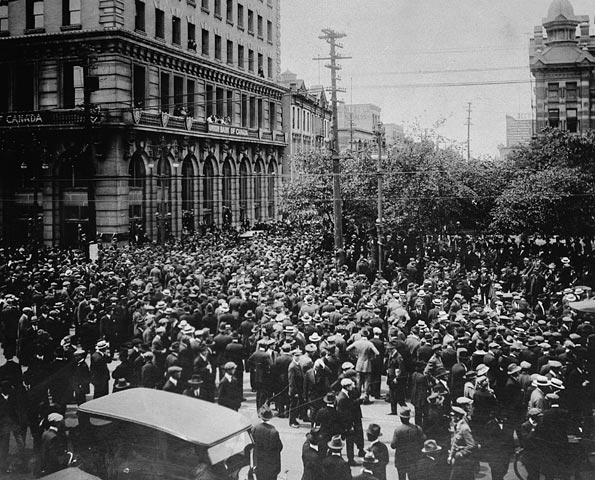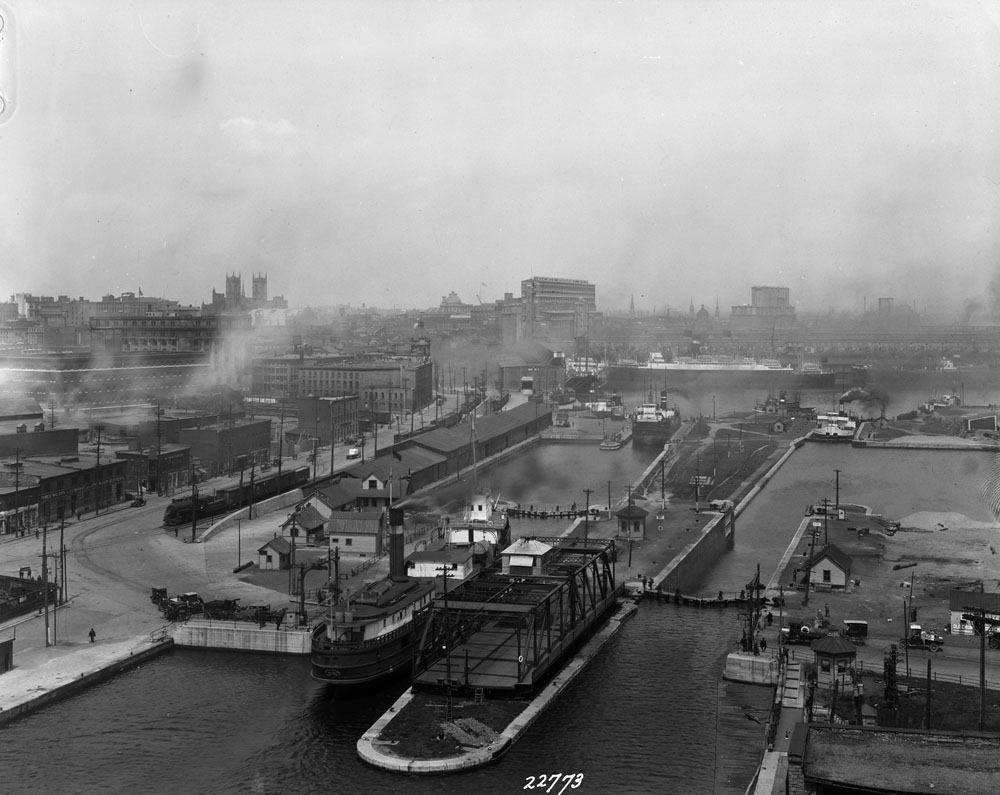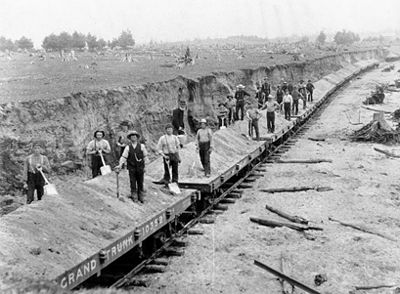Industrialization is a process. It first occurred in Britain in the mid-1700s. That period is called the First Industrial Revolution. At that time, industries that manufactured products began to increase in number. (See also Manufacturing in Canada). The places where the products were made are called factories. Industries became more important than agriculture for the economy. This was a revolution. This had never happened before. In the past, land had always meant wealth. So, landowners were always the wealthiest people. During the Industrial Revolution, the individuals and companies that owned the factories became wealthy. Another big change was that fewer people farmed. They moved to cities to work in factories. This meant that cities became bigger and bigger. Thus, the industrial revolution led to urbanization. It also led to workers earning wages (or money) for their work. This was another first.
This article is a plain-language summary of Industrialization in Canada. If you are interested in reading about this topic in more depth, please see our full-length entry, Industrialization in Canada.
The Spread of the Industrial Revolution
Other countries began to industrialize after Britain. At that time, many new technologies were created. These include the spinning jenny and steam power. This was also a time when railways and iron ships were developed. (See also Railway History in Canada; Shipbuilding and Ship Repair.) Industrialization started in British North America (Canada) in the 19th century.
Woman Using a Spinning Jenny
The Spinning Jenny was invented by James Hargreaves in the 18th century. The Spinning Jenny was a machine that allowed a person to spin several threads. Colourised black and white print, artist unknown.
(Photo by The Print Collector/Getty Images)
The center of industrialization in Canada was in what is now known as Quebec and Ontario. Most of the factories were in Toronto and Montreal. At first, they mostly made tools, farm implements and other metal products (see Agricultural Implements). They also made textiles, alcohol, and ships (see Textile Industry; Distilling Industry). Most of the factories were small. They got bigger during the Second Industrial Revolution.
The Second Industrial Revolution in Canada: 1860s to 1950s
The Second Industrial Revolution began in the 1860s. It ended in the 1950s. It was different from the First Industrial Revolution for many reasons. For one, automation was used. Automation is the use of machines in manufacturing. The assembly line was also used. Because of that, many more products could be made faster than before. It was the age of mass manufacturing. One of the most important products made at that time was the automobile. Henry Ford created the mass assembly line. Each worker on the line had to perform only one job. It meant that more cars could be made quickly. It also meant that the cars would not be very expensive. As a result, more and more people bought cars. Thus, the automobile industry was born. It is still one of the most important industries around the world. (See also Automotive Industry.)

The automobile industry was a leading industry in Canada during the Second Industrial Revolution. Many other industries developed as well, such as meat packing. Most of these industries were located in Quebec and Ontario.
Labour Relations
For a long time, workers had few rights. They also did not make much money. And their working conditions were not very good. To increase their pay and improve their working conditions, many workers joined unions. A union is an organization that aims to help workers. Employers did not like unions. So, there was much tension. This tension ended up exploding during the Winnipeg General Strike of 1919. A general strike is when many workers from different industries go on strike at the same time. It was crushed by the police. Some people were killed. Many were arrested. The Winnipeg General Strike was the largest strike in Canadian history. Since then, many more strikes have occurred. But none have been as violent. By the 1960s and 1970s about 30 per cent of the Canadian working population were in unions. (See also Labour Organization.)

Post-Industrial Age
Canada is now in what is called the Post-Industrial Age. A main characteristic of this age is the decline of manufacturing. Many manufacturers shut down their factories in Canada and set them up elsewhere. One of the main places they set up these factories was Asia. They did this because the cost of manufacturing goods is less expensive there. Another characteristic of the Post-Industrial Age is that more and more Canadians work in the service industry and the technology industry (see Technology in Canada). Unlike the First and Second Industrial Revolutions when Canadians worked to produce goods, now they make ideas, technologies and services.

 Share on Facebook
Share on Facebook Share on X
Share on X Share by Email
Share by Email Share on Google Classroom
Share on Google Classroom











